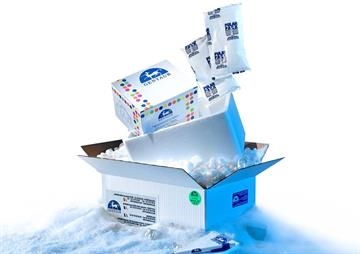- Categories
- Specials and Offers
- Custom Services
- Products
FOXO Reporter Kit (PI3K/AKT Signaling Pathway)


FOXO Reporter Kit (PI3K/AKT Signaling Pathway)
0.01 €Ask for quotation
On request
quantity
product details
Catalog number: 137 - GWB-PS252F
Product Category: Business & Industrial > Science & Laboratory
GenWay BiotechGentaur
Size: 500reactions
Related Products
60519
Myc Reporter Kit (Myc Signaling Pathway)
The Myc Pathway Reporter kit is designed for monitoring the activity of the Myc signaling pathway in cultured cells. The kit contains a transfection-ready expression vector for c- Myc and Myc luciferase reporter vector. Inside the cells, c-Myc will bind to Max, translocate to the nucleus, and induce expression of the Myc luciferase reporter vector. This reporter contains the firefly luciferase gene under the control of multimerized Myc responsive elements located upstream of a minimal promoter. The Myc reporter is premixed with constitutively-expressing Renilla (sea pansy) luciferase vector, which serves as an internal positive control for transfection efficiency._x000D_The kit also includes a non-inducible firefly luciferase vector premixed with constitutivelyexpressing Renilla luciferase vector as a negative control. The non-inducible luciferase vector contains a firefly luciferase gene under the control of a minimal promoter, but without any additional response elements. The negative control is critical for determining pathway-specific effects and background luciferase activity.
1087.50 €
79730
STAT3 Reporter Kit (STAT3 Signaling Pathway)
The STAT3 Reporter kit is designed for monitoring the activity of the STAT3 signaling pathway in cultured cells. The kit contains transfection-ready STAT3 luciferase reporter vector. This reporter contains a firefly luciferase gene under the control of STAT3-responsive element located upstream of a minimal promoter. The STAT3 reporter is premixed with constitutively expressing Renilla luciferase vector, which serves as an internal control for transfection efficiency._x000D_<br />The kit also includes a non-inducible firefly luciferase vector premixed with constitutively-expressing Renilla luciferase vector as a negative control. The non-inducible luciferase vector contains the firefly luciferase gene under the control of a minimal promoter, without any additional response elements. The negative control is critical to determining pathway-specific effects and background luciferase activity.
1110.00 €
60500
TCF/LEF Reporter Kit (Wnt Signaling Pathway)
The TCF/LEF Reporter kit is designed for monitoring the activity of Wnt / β-catenin signaling pathway in the cultured cells. The kit contains transfection-ready TCF/LEF luciferase reporter vector, which is a Wnt pathway-responsive reporter. This reporter contains a firefly luciferase gene under the control of multimerized TCF/LEF responsive element located upstream of a minimal promoter. The TCF/LEF reporter is premixed with constitutively-expressing Renilla luciferase vector that serves as internal control for transfection efficiency. _x000D_The kit also includes a non-inducible firefly luciferase vector premixed with constitutively-expressing Renilla luciferase vector as negative control. The non-inducible luciferase vector contains a firefly luciferase gene under the control of a minimal promoter, without any additional response elements. The negative control is critical to determining pathway specific effects and background luciferase activity. _x000D_
1132.50 €
PSI-1805
TOR Signaling Pathway Detection Set
The mammalian Target of Rapamycin (TOR, also known as mTOR) is an evolutionarily conserved serine/threonine kinase that regulates cell growth and cell cycle progression through its ability to integrate signals from nutrient levels and growth factors. TOR regulation is accomplished through a network of various activators and repressors. It is phosphorylated by Akt, whose activity is indirectly inhibited by the lipid phosphatase PTEN. TOR is normally associated with the regulatory proteins RAPTOR, a scaffold protein whose binding by TOR substrates is necessary for effective TOR-catalyzed phosphorylation, and GΒL, which stimulates TOR’s kinase activity towards downstream proteins. It is further regulated by the proteins Rheb, TSC1 and TSC2, which act to modulate TOR activity. The downstream targets of TOR are thought to be the ribosomal protein S6 kinases and the eukaryotic initiation factor 4E binding proteins (4EBPs) whose activation leads to increased protein translation and cell growth.;;<b>For images please see PDF data sheet</b>









